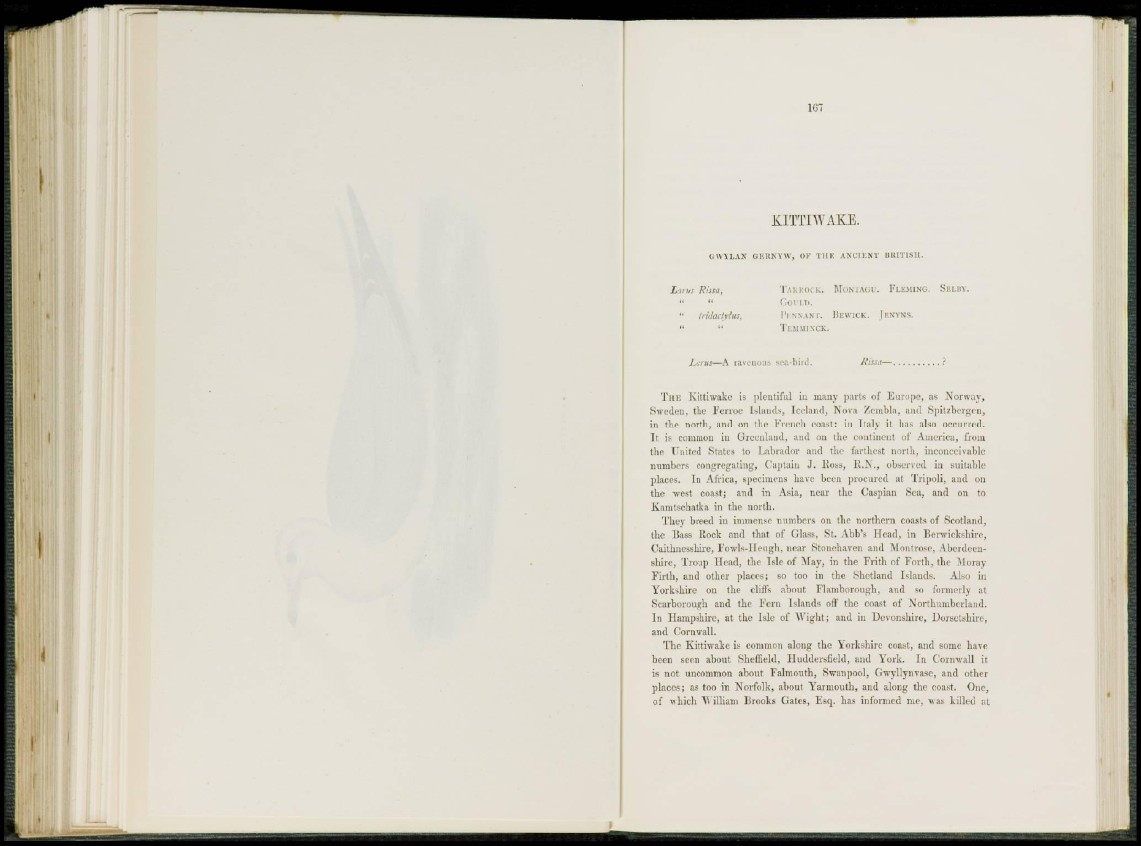
K I T T I W A K E .
G WY.LAN GERNYW, OF THE ANCIENT BRITISH.
La/a? Rt'ssa,
tridactylus,
TARROCK. MONTAGU. FLEMING. SELIIY.
GOULD.
PKNNANT. BEWICK. JENYNS.
TEMMINCK.
Latus—A ravenous s e a - b i r d. Jiissa—.
T H E Kittiwake is plentiful in many parts of Europe, as Norway,
Sweden, the Ferroe Islands, Iceland, Nova Zembla, and Spitzbergen,
in the north, and on the French coast: in Italy it has also occurred.
I t is common in Greenland, and on the continent of America, from
the United States to Labrador and the farthest north, inconceivable
numbers congregating, Captain J. Ross, R.N., observed in suitable
places. In Africa, specimens have been procured at Tripoli, and on
the west coast; and in Asia, near the Caspian Sea, and on to
Kamtschatka in the north.
They breed in immense numbers on the northern coasts of Scotland,
the Bass Rock and that of Glass, St. Abb's Flead, in Berwickshire,
Caithnesshire, Fowls-IIeugh, near Stonehaven and Montrose, Aberdeenshire,
Troup Head, the Isle of May, in the Frith of Forth, the Moray
Firth, and other places; so too in the Shetland Islands. Also in
Yorkshire on the cliffs about Flamborough, and so formerly at
Scarborough and the Fern Islands off the coast of Northumberland.
In Hampshire, at the Isle of Wight; and in Devonshire, Dorsetshire,
and Cornwall.
The Kittiwake is common along the Yorkshire coast, and some have
been seen about Sheffield, Huddersficld, and York. In Cornwall it
is not uncommon about Falmouth, Swanpool, Gwyllynvase, and other
places; as too in Norfolk, about Yarmouth, and along the coast. One,
of which William Brooks Gates, Esq. has informed me, •was killed at